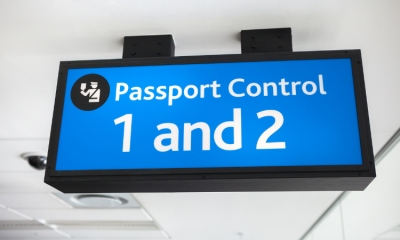Starting Sunday, October 12, Croatia will implement a new Entry/Exit System (EES) at all border crossings for citizens of non-Schengen countries — a move that could cause delays at crossings with Serbia, Bosnia and Herzegovina, and Montenegro, the Ministry of the Interior (MUP) has announced.
The EES is an EU-wide digital border control system that replaces passport stamps and automatically records the time and place of entry and exit for travellers from third countries. It also tracks the duration of short stays and collects biometric data, including facial images and fingerprints from four fingers of the right hand.
Children under 12 are exempt from fingerprint collection. During future crossings, traveller identity will be verified by comparing a live image with the one stored in the EES, helping speed up checks over time.
The system will initially operate for at least four hours a day, gradually extending to 24-hour use within six months. Special EES lanes will be available for non-EU travellers, but during busy periods the system will function across all lanes.
Croatia is also introducing a National Facilitation Programme (NPO) for frequent travellers from third countries who are considered low-risk, allowing faster crossings without repeated biometric registration.
At airports in Zagreb, Split, Dubrovnik, Pula, Zadar, and Rijeka, self-service EES kiosks will be available for travellers entering the Schengen Area for the first time. The process includes scanning a passport, collecting biometric data, and answering a short multilingual questionnaire.
While officials expect longer queues initially, they say waiting times will improve once more travellers are registered in the system and border officers adapt to the new procedures.
